Customer segmentation is a cornerstone of effective retail marketing strategy, offering myriad benefits for businesses across various sectors. By examining customer segmentation examples, we can see how dividing customers into distinct groups based on their preferences, behaviors, and demographics allows brands to personalize marketing content. This personalization boosts engagement and enhances each campaign’s efficiency, ultimately leading to better results and higher returns on investment. Studies have shown that personalization can drive, on average, 40% higher revenue for high-growth companies compared to their slower-growing counterparts. (McKinsey).
Furthermore, customer segmentation provides invaluable insights into customer preferences, enabling brands to tailor their offerings to meet specific needs. This approach not only improves customer satisfaction but also helps identify gaps in product assortments and the overall customer journey. By understanding these gaps, retailers can refine their strategies to better serve their customers, ultimately fostering loyalty and driving sustained growth.
In this blog post, we’ll learn how different sectors within the retail industry leverage customer segmentation to optimize their marketing efforts and deliver exceptional customer experiences. Through practical examples, we’ll illustrate the transformative power of segmentation and how it can lead to more personalized, effective, and profitable marketing strategies.
What is customer segmentation, and why do it?
Customer segmentation, is the strategic practice of dividing a company’s entire customer base into distinct groups that share common characteristics. These characteristics can range from geographic location and demographic details such as age, gender, and income level, to behavioral traits like purchasing habits, product preferences, and engagement levels. By grouping customers based on these similarities, businesses can better understand and address the unique needs and preferences of each segment.
Moreover, customer segmentation is the foundational step towards comprehensive marketing personalization. It allows businesses to move away from broad, impersonal outreach and towards a more nuanced and individualized approach. As a result, segmented marketing campaigns tend to perform better in terms of engagement rates, conversion rates, and return on investment (ROI). Ultimately, effective customer segmentation can lead to increased customer loyalty, higher sales, and sustainable business growth.
Simply put, instead of sending out generic messages to all consumers, retailers can develop targeted marketing efforts that resonate more deeply with specific groups. For instance, a company might identify a segment of environmentally conscious customers and create a campaign highlighting their eco-friendly products. Another segment could be frequent buyers who receive loyalty rewards and exclusive discounts, encouraging repeat purchases and fostering brand loyalty.
Let’s look at another example of macro segmentation on demographics, focusing on gender. Since men and women have distinct preferences, communication styles, and purchasing habits, retailers can achieve better outcomes by tailoring their marketing tactics for each gender. This includes selecting distinct products and tailoring the visual design or wording of the campaign template to suit each gender, leading to tangible results in campaign performance.
Industry-specific segmentation examples
Here are several examples of targeted campaigns designed for specific audiences across various retail verticals.
Customer segmentation examples for fashion retailers
Fashion retailers may use industry-specific segmentation to categorize customers based on:
- Style Preferences
- Occasion (casual, formal, party wear)
- Size (petite, plus-size).
For instance, a luxury fashion brand might employ this approach to target affluent consumers with exclusive collections and personalized shopping experiences.
Demographic: Gender-based segmentation
Tommy Hilfiger enhances site visitor conversion with gender-specific pop-ups using ContactPigeon’s gender predictions. This tactic increases overall visitor sign-ups and is further used for email retargeting based on visitor browsing behaviors.
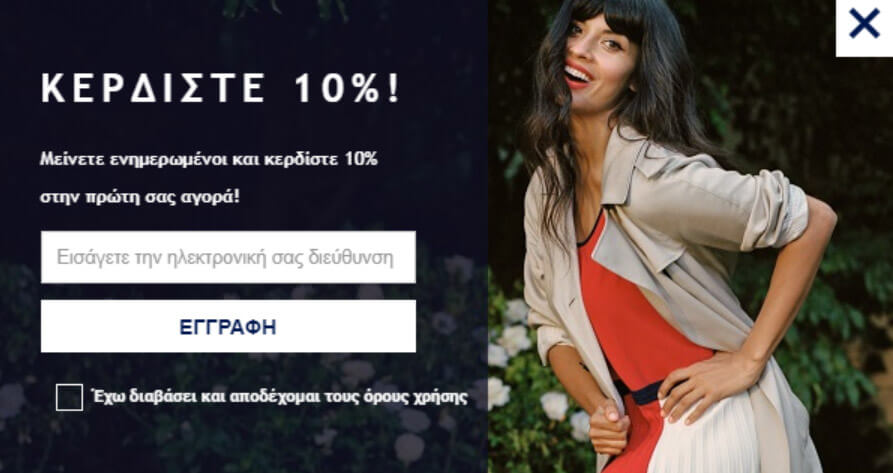
Demographic: Family-status based segmentation
Gap ran an email marketing campaign targeting families with kids, particularly moms, who comprise a significant part of their shopper demographics. The campaign collaborated with mom bloggers to showcase matching outfits with their little ones. Including the brand’s product with real-life families not only accentuates the brand’s identity as a family-oriented label but also attracts the attention of its core buyers.
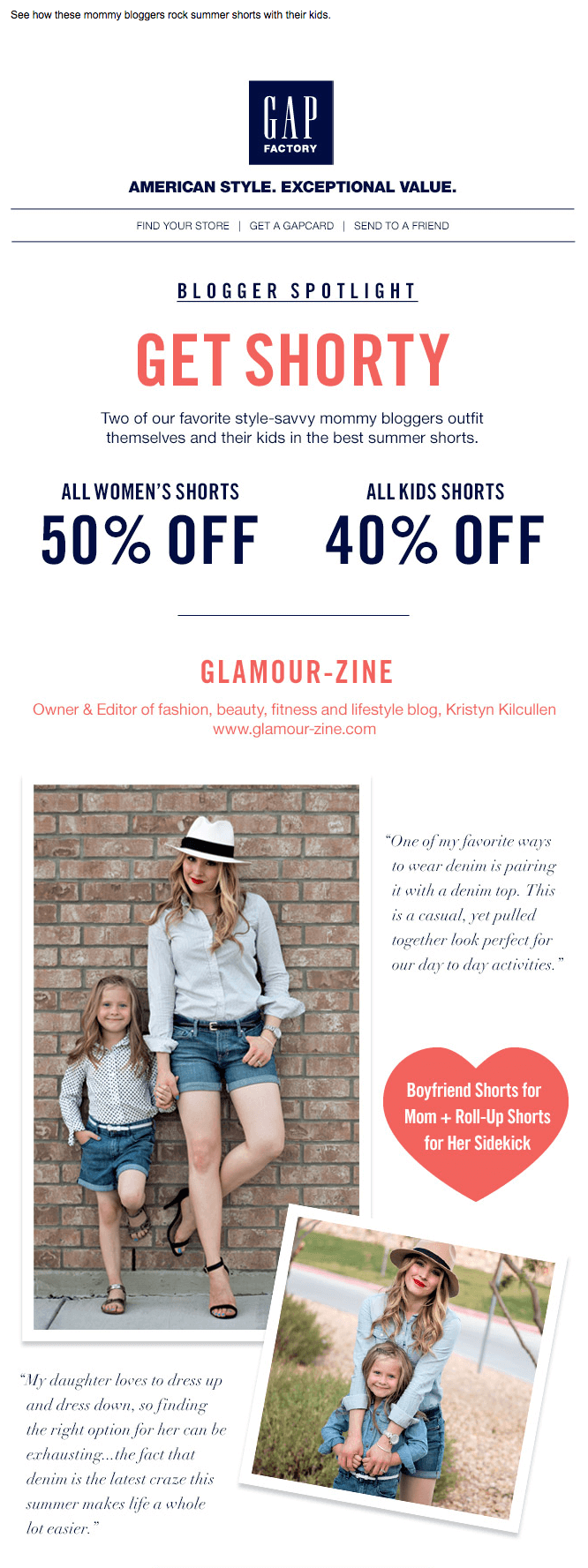
Product Use: Segment based on product size
Girlfriend Collective is a women’s fashion label that focuses on inclusivity. One of its campaigns uses size preference as a basis for segmentation, offering re-stock options for plus-size products tailored to shoppers’ needs.

Geographical: Location-based segmentation
Uniqlo segments shoppers by geography to promote weather-relevant attires. In this example, Uniqlo targeted customers near St. Paul, Minnesota, given the city’s transitional spring weather, which requires clothing that works in all weather conditions.


Customer segmentation examples for cosmetics retailers
Cosmetics retailers often use industry-specific segmentation to divide their customers based on skin type, make-up preferences (natural vs. bold looks), beauty concerns (anti-aging, acne-prone), or lifestyle values.
Psychographic: Value-based segmentation
Sephora, a cosmetics retailer, targets eco-conscious consumers with clean, vegan, and cruelty-free products. This campaign targets this specific interest group and reinforces the brand’s authority on accrediting products as clean and eco-friendly.

Demographic: Occupation/Ownership-based segmentation
Vacation, a sunscreen producer based in Miami, built a campaign explicitly targeting rental owners, party hosts, and event organizers. It’s a creative approach to targeting a segment of their potential consumers through those who are likely to host guests for vacations. As we all know, word-of-mouth recommendations from people we know are among the most effective marketing channels yet.
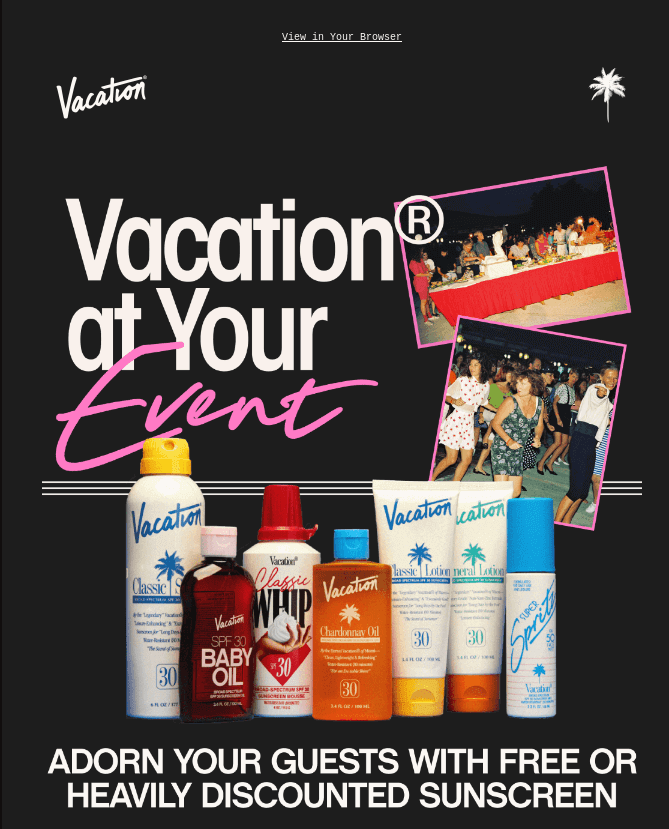
Customer segmentation examples for pharmacy retailers
Pharmacy retailers may segment customers based on health conditions (chronic vs. occasional ailments), medication usage, or age demographics (seniors vs. young adults). Of course, since most pharmacy retailers also carry cosmetics and personal care products, similar segmentation approaches can be used with cosmetics companies.
Psychographic: Interest-based segmentation
Vita4You, a large pharmacy in Greece, segmented its mailing list based on gender (male vs. female), health needs, and family status (mother and child). One of its campaigns was designed to appeal to athletes or individuals who love to work out.
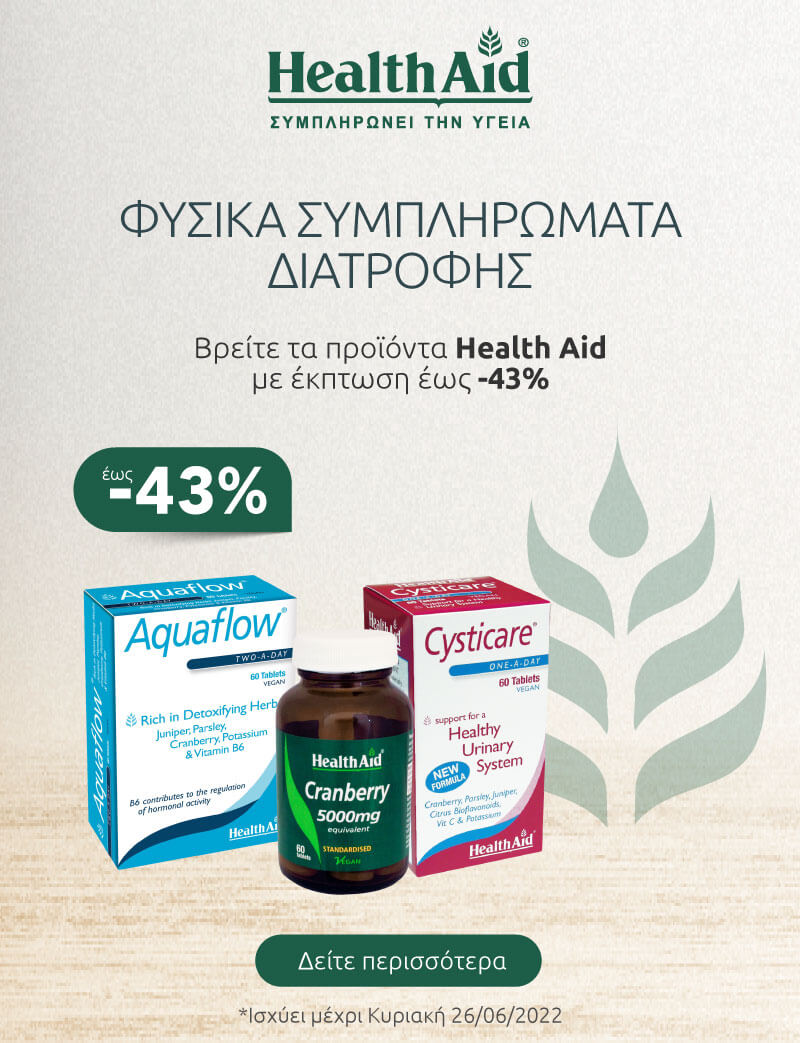
Behavioral: Segment based on purchase histories
Deeps, a sleep science company, uses customer purchase histories as a basis for segmentation. A common and easy way to segment based on customer behaviors is targeting recent subscribers who have not made their first order. This example from Deeps perfectly combines the welcome email with their product visually with a hand wave. It takes the opportunity to educate subscribers on their brand and offers a coupon to nudge them towards that first purchase.
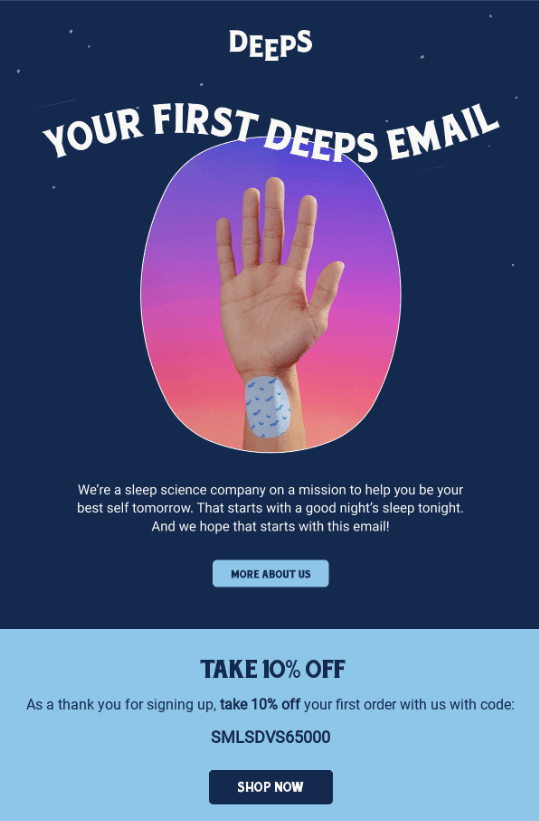
Customer segmentation examples for sporting goods retailers
Sporting goods retailers could segment customers based on sports interests (running, cycling, tennis), skill level, or fitness goals. For instance, a sports retailer might target fitness enthusiasts with performance-oriented activewear and equipment.
Psychographic: Interest-based segmentation
Nike uses interest-based campaigns to perfection. In this example, Nike tailored its message to gym enthusiasts into cross-fit or training by highlighting entire outfit pairings for gym use and the line’s unique selling points (USPs).
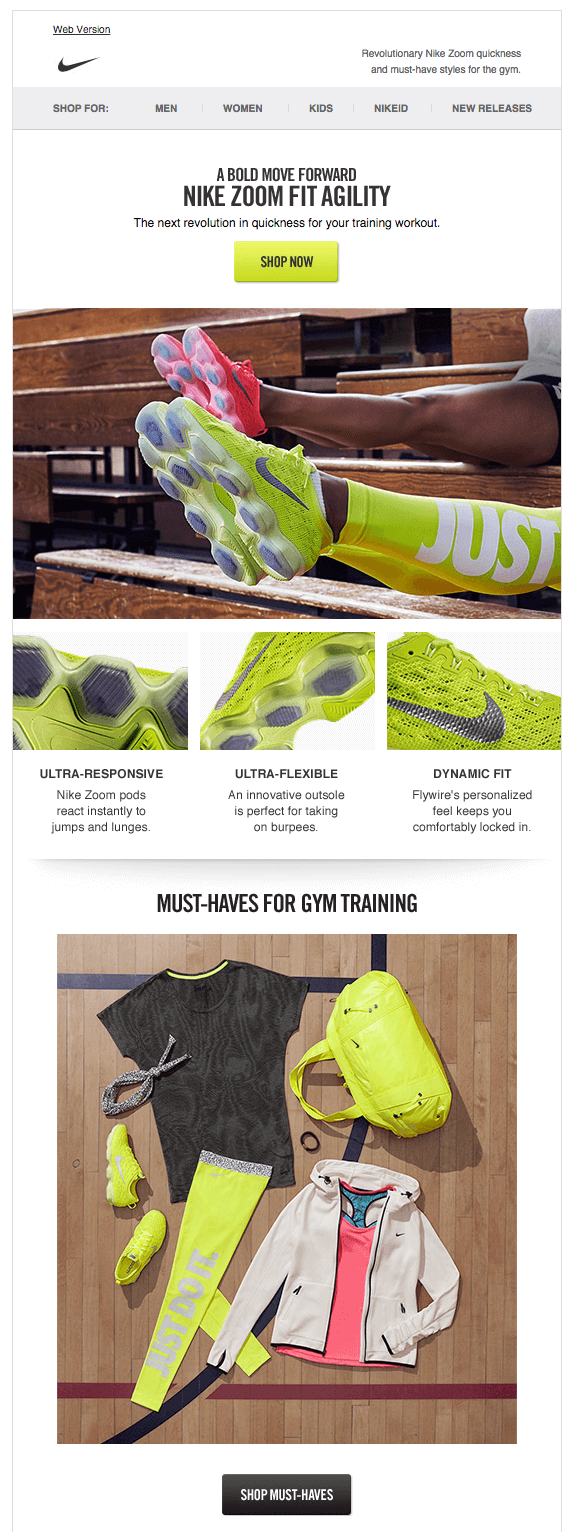
Behavioral: Segment based on customer activity
Converse follows up with every user account setup with a punchy thank you email that also serves as a nudge on the next steps – shop and create.
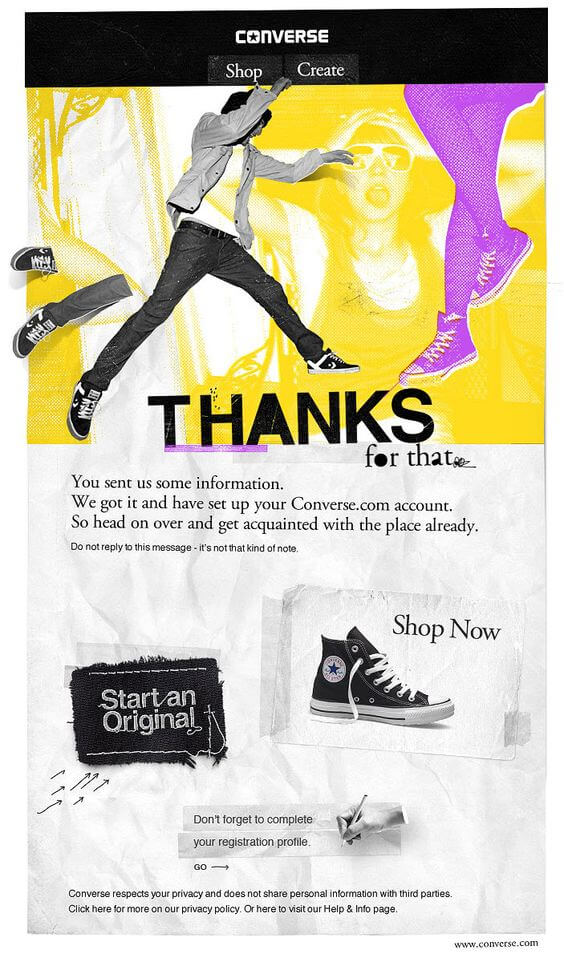
Customer segmentation examples for consumer electronics retailers
Consumer electronic retailers often segment customers based on tech-savviness, device usage (smartphones, laptops, wearables), or purchase intent (early adopters vs. late adopters). For example, a tech retailer might target gamers with gaming peripherals and accessories.
Demographic: Segment by customer type
Lenovo classified its customers by whether they are individuals or businesses (small vs large). In this example, Lenovo has targeted small business buyers with content tailored to this segment, such as BYOD (bring your own device policy) geared towards cost saving for small business owners.

Pyschographic: Segment by product or brand preference
Best Buy, a major electronic retailer based in North America, often runs brand or category-specific campaigns to target those who are interested in the brand/category based on prior behavioral patterns. This example from Best Buy features an Apple Mac laptop with corresponding accessories from the brand.

Customer segmentation examples for book retailers
Book retailers may segment customers based on reading preferences (fiction vs. non-fiction), genre interests (mystery, romance, science fiction), or age demographics (children’s books vs. adult fiction). For example, a book retailer might target avid readers with personalized book recommendations and author events.
Product Use: Segment by reading preferences
Amazon has a highly sophisticated product recommendation algorithm that works on the assumption that people who prefer one book through previous purchases will like another book of a very similar flavor. This form of micro-segmentation groups consumers with similar preferences and generates dynamic product suggestions based on the books within the same preference group.
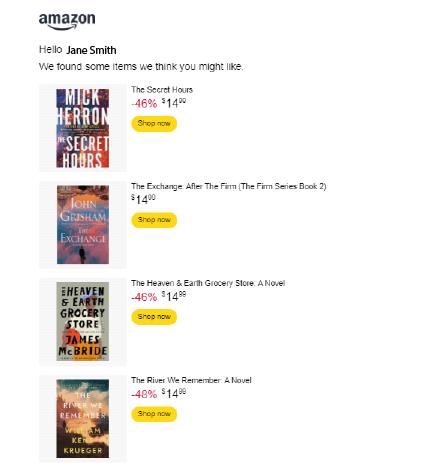
Pyschographic: Segment based on a liked author
A similar approach to the Amazon example is to group readers by the authors from whom they have purchased. This example from Barnes & Noble features a specific author profile, and her latest work may convert better among readers who have previously encountered the author’s works. Particularly for retailers with a large collection of diverse products, having a category or brand-specific segmentation approach works wonders.

Customer segmentation examples for food & beverage retailers
Food & beverage retailers may segment customers based on shopping habits (weekly vs. monthly shopping), dietary preferences (organic, vegan, gluten-free), or household size. For instance, a supermarket chain might target busy families with convenient meal solutions and family-sized packages.
Behavioral: Segment based on customer purchases
Gregory’s, one of Greece’s largest coffee and micro meal chains, runs an ongoing campaign to collect feedback from customers with recent orders. It’s a great way to keep a pulse on customer experiences and identify issues before the problem becomes pervasive.
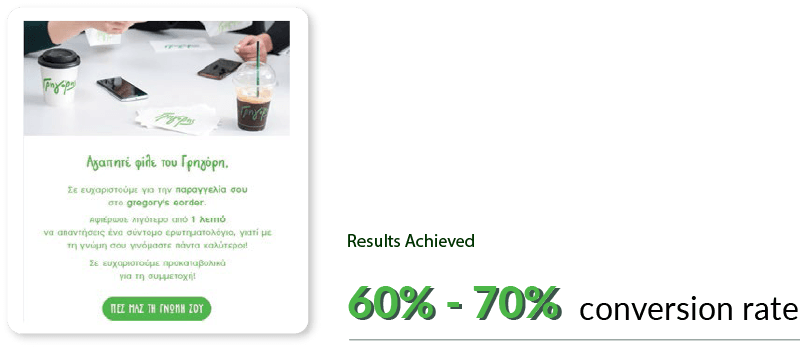
Demographic: Segment by birthday, week, or month
Another popular segmentation and personalization campaign technique is to offer a birthday special. In this example, Dutch Bros Coffee offers a free birthday drink at a local store for the birthday recipient.

Demographic: Segment by occupation/customer type
Levian Bakery ran a smart campaign promoting their products to businesses, office administrators, and managers for employee appreciation day.
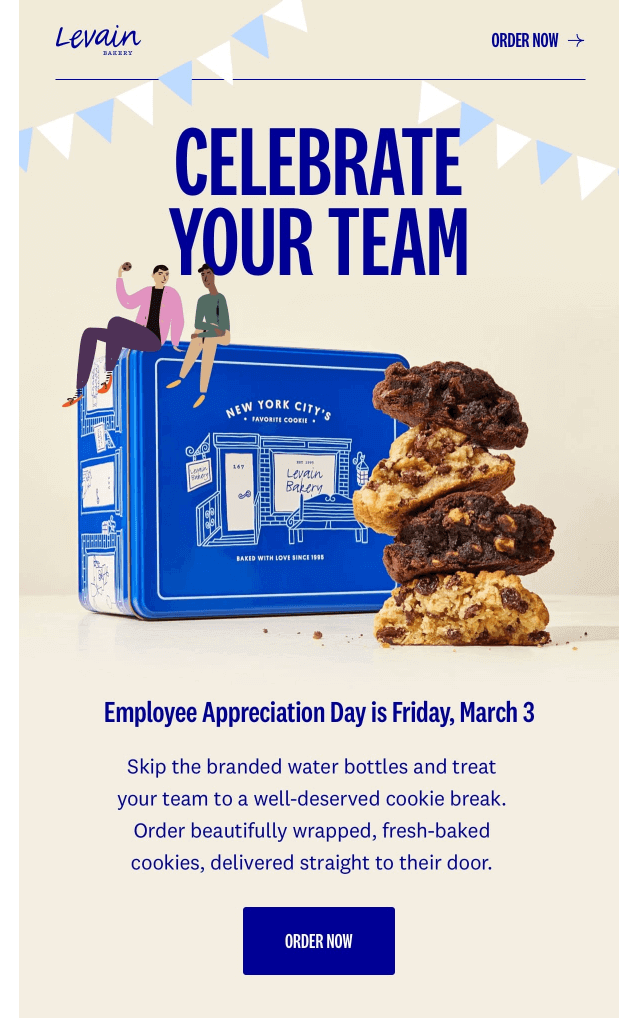
Shifting towards micro-segments and individual marketing
Many brands have incorporated macro-segmentation (such as gender, customer types, behavioral milestones, etc) within their retail marketing strategies. As seen in some customer segmentation examples above, the more targeted or relevant the marketing message is to the recipient, the more likely the campaign will reach its intended audience with conversion results.
Trends suggest that retailers are increasingly moving towards micro-segmentation and individualized marketing approaches. Some examples of micro or individualized segmentation include:
- Campaigns featuring product recommendations based on past browses, purchases, and add-to-cart activities
- Campaigns that are customized for the recipient’s unique shopping journies or milestones (e.g., frequent shoppers of pet food who have suddenly seen a longer-than-average gap)
- Thank you note to loyal or first-time customers who have shopped at a physical store
- Moms in their 30s-40s who are seeking eco-conscious toys for their children
This shift towards micro-segmentation is how retailers compete and meet the evolving needs of today’s consumers. By adopting advanced analytics, customer data platforms, and AI technologies, retailers can tailor marketing messages and promotions to individual customers and deliver personalized shopping experiences by learning from the data of that individual and similar profiles.
How ContactPigeon’s powerful CDP and Personalization tool can help
A strong foundation of customer data, insights, and underlying customer engagement capabilities, such as dynamic content personalization and campaign automation, is the basis for successful customer segmentation and retail marketing strategies. This is why G2 rated ContactPigeon as one of the top marketing automation solutions for retailers in 2024.
ContactPigeon platform shines on the following areas:
1. Unified customer profile, since data is the foundation of marketing success. ContactPigeon effortlessly collects, combines, and stores customer behaviors through website data, omnichannel campaign interactions, and eCommerce histories to build well-rounded single customer profiles.
2. Deeper customer insights with BI analytics. From understanding channel effectiveness to analyzing audience RFM clusters. ContactPigeon’s users can drill and pivot their way with the built-in BI tool on the wealth of customer, order, traffic, and campaign data for deep insights.

3. Omnichannel activation for orchestrated marketing results. Lastly, users can directly convert the data and insights into marketing actions with proven results. From personalized product recommendations to re-activation of at-risk customers, ContactPigeon allows you to set up journey flows with dynamic content across a wide range of channels built into the platform—including email, SMS/Viber/WhatsApp, push notifications, pop-ups, landing pages, chatbots, and even offline channels such as postcards, QR codes, and in-store access points.
Turn these customer segmentation examples into growth
By utilizing various segmentation types retailers can craft more personalized and effective marketing strategies. Each retail vertical, from fashion and cosmetics to pharmacies, benefits uniquely from these tailored approaches. The real game-changer, however, lies in micro-segmentation and individual marketing. By drilling down into more specific sub-groups within larger segments, retailers can create highly personalized experiences that resonate deeply with customers. This level of granularity not only enhances customer satisfaction but also drives loyalty and repeat business, essential components for thriving in today’s oversaturated market.
Hyper-personalized marketing, powered by a sophisticated CDP like ContactPigeon, is the key to unlocking this potential and achieving sustained success in the competitive retail environment. With the aid of a robust CDP, retailers can harness the power of data to implement micro-segmentation and individual marketing strategies effectively. As consumer expectations continue to rise, those who embrace these advanced segmentation techniques will not only survive but thrive, setting new standards for personalized retail experiences.
In conclusion, the future of retail lies in the ability to understand and cater to the individual needs of each customer. To learn more about how ContactPigeon can make a difference in your customer segmentation strategy, request a live demo here.

Let’s Help You Scale Up




